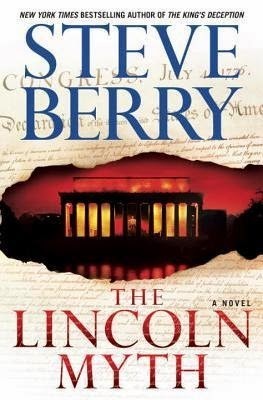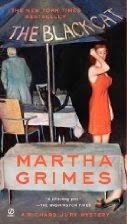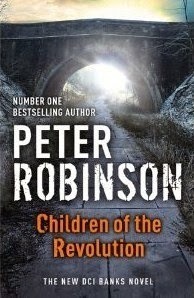Michael A. Draper's Blog, page 21
June 8, 2014
Newport, the setting for a murder
 "Murder in Newport" is another fun read by the author of "Murder in Mystic."
"Murder in Newport" is another fun read by the author of "Murder in Mystic."Liz Adams and her husband, Garret, decide on a vacation in Newport. They dock next to a luxury yacht, Party Girl.
Garret is looking at the Party Girl when he's startled to see Rebecca, his first love. She disappeared from his life nearly thirty years ago.
Even though he's been happily married to Liz for twenty-seven years, Rebecca still holds a place in his heart. After confirming that it is Rebecca, he manages an invitation to board the Party Girl. They meet Rebecca's daughter, Jessica who is in her late twenties. They also meet Howard Boswell, a wealthy autocrat, Rebecca's husband.
Eventually there is a murder and the fun begins. Garret is a suspect and Liz sets out to find the real killer. As she sneaks onto the Party Girl and has to hide in a small compartment, she reminded me of a young Lucille Ball.
I enjoy the series and find Liz Adams to be an entertaining character. The author, Marilyn Della Valle has done her homework in describing Newport, with notable places like Bowen's Wharf and the Black Pearl restaurant visited by Liz and Garret. It's easy to close my eyes and imagine I'm in the crowd and watching the action unfold.
I received a free book for an honest review and the views are my own.
Published on June 08, 2014 16:29
June 5, 2014
Southern literature
 Perry Woodson Hatfield James is a seventeen-year-old boy who is a mine worker in Harlan County, Kentucky. He's proud of his family heritage being of the Hatfield clan and a distant relative to Frank James.
Perry Woodson Hatfield James is a seventeen-year-old boy who is a mine worker in Harlan County, Kentucky. He's proud of his family heritage being of the Hatfield clan and a distant relative to Frank James.The story opens when he's with a number of men and sets an explosive device to go off and shut down a mine that was hiring non-union workers. Since the scabs take jobs of union men, they feel that they are taking food off of their table.
With the minors on strike and no work to be found, Perry enters the job corps. He makes mistakes but owns up to them and ends up with letters of recommendation and the promise of a good job. However, a letter comes about his father being injured in a bomb that was set at a union meeting. He rushes home to see his father and promises revenge to the men who set the bomb.
Perry's family refuses to accept welfare and there is a memorable scene when welfare workers come to his home and discuss taking the three youngest children to a home where they could get care and feeding.
With Perry's desire for revenge, the reader feels sympathy for him and hopes that he doesn't throw his life away.
The story is extremely believable and reading of the economically deprived workmen and the big time businesses that are looking out only for themselves, the story reminded me of "The Grapes of Wrath."
Published on June 05, 2014 07:04
June 4, 2014
History rewritten
 Cotton Malone was ready to start enjoying his retirement from the justice department when he receives a call from his old boss. One of her agents is missing and she wants Malone to detain a suspect who may have information on where her agent might be. She is sending one of her active agents but needs Malone to detain the suspect before he escapes their pursuit.
Cotton Malone was ready to start enjoying his retirement from the justice department when he receives a call from his old boss. One of her agents is missing and she wants Malone to detain a suspect who may have information on where her agent might be. She is sending one of her active agents but needs Malone to detain the suspect before he escapes their pursuit.So begins best selling author Steve Berry's latest entry into the Cotton Malone series.
There is a secret document sent from Abraham Lincoln to Mormon leaders during the Civil War. If the details of this document are released, it could mean the end of the union.
One Mormon who is also a U.S. Senator, has ambition to lead the Church of Later Day Saints. He leads the plot to find this document which could give Utah and other states the legal right to leave the union and declare their independence.
Malone is drawn into the intrigue and learns that his former lover is also involved.
The complex plot is well laid out with action moving from Sweden to Salt Lake City, to Washington, D.C. and elsewhere. The historical characters who make an appearance such as Abraham Lincoln and Brigham Young, are fun to observe.
There is a parallel story about a lost gold shipment from 1857 and finding it could give the Mormon separatists the funds to declare their independence.
I found the background of this document fascinating and the originality of the mystery interesting.
Published on June 04, 2014 15:13
June 1, 2014
World War I story
 "The First of July" is a sweeping war epic that deserves to be placed with the exceptional war novels of WWI.
"The First of July" is a sweeping war epic that deserves to be placed with the exceptional war novels of WWI.With recent wars in Iraq and Afghanistan, readers often forget about the battles and terrific losses in WWI. In a disaster that was the Battle of the Somme, the final numbers showed over 57,000 casualties of whom over 19,000 died and over 35,000 were wounded.
This story lets the reader share in the lives of four men who were to participate in the battle. We follow their paths from 1913 to their actions in the battle on July 1, 1916.
Frank Stanton was an apprentice carpenter who moved to London at age 19. He became a store clerk who dreamed of riding a bike in the Tour de France.
Benedict Chatto from Gloucester, was a music student and close friends with another student, Theo. They would both serve as officers in the army, Ben in artillery and Theo as a pilot.
Jean-Baptiste Mallet from Corbie, France, worked in a blacksmith shop and left home after witnessing an unpleasant situation.
Harry Sydenham was a businessman in New York after leaving England suddenly after a family incident.
The author does a good job in describing the characters and the pride they took at being soldiers. At Frank's business, the company gave a monetary bonus to each man who joined the army. We read the interesting turns of fate as the man cross paths at various points in the battle.
The gritty image of exploding bombs, grotesque corpses of fellow soldiers and dead soldiers whose bodies hung up on the barbed wire were parts of the story that were very visual.
We forget how young men at the time had such patriotic feelings about the war and went into battle not realizing how terrible trench warfare would be or dreaming of the deaths many of the soldiers faced when they tried to race across fields and faced German machine guns.
The story is memorable and reminded me of Picket's Charge in the Battle of Gettysburg in the Civil War.
Published on June 01, 2014 11:36
May 28, 2014
Easy reading family intrigue
 In this tender story, Eva has been married to Jackson for a short time when they travel to Dorset. Jackson decides to go fishing on a windy day and is swept off the jetty and his body isn't recovered.
In this tender story, Eva has been married to Jackson for a short time when they travel to Dorset. Jackson decides to go fishing on a windy day and is swept off the jetty and his body isn't recovered.After a period of mourning, in England, Eva decides that she wants to travel to Tasmania to meet Jackson's family. She believes that she could learn more about Jackson's past and perhaps mourn together.
Although Jackson's father never returned her calls, she goes to his home. His reception is cold and he explains that his son is dead and that it would probably be better if she left. Not giving up, Eva travels to Jackson's brother's home on Wattleboom Island.
After meeting Saul and getting to know him, she learns that the man she had grown to love was not the man he claimed to be. At first, Saul is aloof but eventually he begins to care for Eva and through him, she learns that her marriage was built on lies. The history that Jackson claimed was his own, was actually that of Saul.
We see her sadness at the loss of her husband and the destruction of the man she thought she knew.Eva stays in a small cottage near Saul's home. He teaches her about freediving and she is transported into the love of the deep sea and the tenderness who works as a marine biologist.
The story remains intensely readable as we hope that Eva can find happiness and the power to deal with past lies.
There are numerous surprises as she learns more of Jackson's life in Tasmania. The more she learns about Jackson, the more deceitful he seems but Saul, whose life Jackson was describing is more the man she thought she was marrying.
Published on May 28, 2014 09:22
May 22, 2014
Here kitty kitty
 Superintendent Richard Jury of the New Scotland Yard is assigned to investigate the death of a young woman whose body was found on the grounds of a pub called the Black Cat.
Superintendent Richard Jury of the New Scotland Yard is assigned to investigate the death of a young woman whose body was found on the grounds of a pub called the Black Cat.The woman was well dressed but had no identification. As Jury investigates, he learns that the woman was Mariah Cox who was a librarian but had a secret life as an escort in London.
A side story tells of the young ward of the woman temporarily managing the Black Cat. The girl, Dora, is searching for her black cat named Morris.
Looking for suspects, Jury is told that there was a big party at the home of a wealthy couple on the night Mariah was murdered. On the guest list was Harry Johnson. He's a man Jury has been after for a long time. He's a suspect in a number of crimes but Jury could never get enough evidence to arrest him. Johnson has a quick wit and enjoys a friendly banter with Jury.
Another young woman's body is found, shot in the same manner as Mariah. This woman was also an escort and Jury tries to link the two women to see if they had anything other than their occupation in common.
The story takes a bizarre turn as the reader begins to learn of events through the communication between Harry's dog, Mungo and Morris, the lost cat. This is a most amusing diversion from the professional investigation Jury is conducting.
Jury enlists the help of his friend Melrose Plant and we view the world of English aristocracy. In a humorous scene, Plant arranges to meet an escort in order to see if there were any connections between the two slain escorts. The image of the escort arriving with alluring clothing and the elderly members of Plant's club look of amazement when she arrives was memorable.
This was an easy read and I felt moved by the discussion of Jury and another character about care and attention toward an ill friend or relative. This was something that made me think.
Published on May 22, 2014 15:18
May 21, 2014
Explosive Intensity
 This excellent story takes place in Atlanta in 1974. It is the time of racial unrest. Kate Murphy has joined the Atlanta PD and the reader experiences her first days on the job.
This excellent story takes place in Atlanta in 1974. It is the time of racial unrest. Kate Murphy has joined the Atlanta PD and the reader experiences her first days on the job. The mayor has appointed a new police commissioner who is doing everything he can to break the white power structure of the department.
Kate is the widow of a man killed in Vietnam. She keeps her Jewish heritage and family wealth to herself. Right from the start, she is harassed by the male dominated police department. Black cops and whites stand apart during roll call. Women aren't accepted as police officers and black women treated even worse. The other cops feel that women should only be able to be secretaries and not allowed on the road.
The heated intensity Kate faces comes from the fact that a cop killer has just claimed his fifth victim. It is Jimmy Lawson's partner. His sister, Maggie, is one of the field officers. She is teamed up with Jimmy as he tries to get leads on his partner's murder. Then, when he wants to do things privately, Kate is switched to ride along with Maggie. Maggie tries to teach Kate the ropes but wonders if she is just too pretty and too soft to make it on the job.
We view the story through Maggie's and Kate's eyes and also through the eyes of the killer. Maggie is from a blue collar family and lets the harassment roll off her back. Even her brother Jimmy doesn't try to protect her but joins in the taunting and innuendos of his beer drinking friends.
Maggie and Kate get caught up in their attempts to try to find the killer and something happens to Jimmy. Again, we see the action through the eyes of the killer who is making moves and stalking Kate as his next victim.
The dialogue is intense and the action burns with speed. Maggie tries to take command but her uncle, a sergeant on the police, is one of the leaders of the cops taking the law in their own hands.
Karin Slaughter is a heavyweight writer who is at the top of her form with this thirller. The reader feels sympathy for Kate and Maggie while dreading that they might become victims of the killer or of the maniacal philosophy of many of the seasoned cops.
Published on May 21, 2014 08:06
May 13, 2014
The serial arsonist is difficult to apprehend...the evidence is burned up
 After working with a humanitarian agency in Africa for fifteen years, Frankie Rowley returns to her parents' home in Pomeroy, New Hampshire.
After working with a humanitarian agency in Africa for fifteen years, Frankie Rowley returns to her parents' home in Pomeroy, New Hampshire.On her first night home, she observes a car speeding down her country road and later learns that a neighboring home was burned to the ground.
At first, some speculated that this must have been an accident and Frankie spends time with her parents, noticing her father's change in health and memory.
Other fires burn houses of summer residents and a town meeting is called to discuss it. We learn that the town police consists of only one man and the fire department is voluntary. It is brought up that the arsonist is taking aim and the homes of wealthy summer residents. Some of those residents are at the meeting and suggest neighborhood patrols and better security. The permanent residents seem offended and a conflict is seen about how this wealth has changed a quiet town where it didn't seem necessary to lock the doors of a person's home.
Frankie meets Bud Jacobs, owner of the local paper and they begin a romantic relationship. She moves into the house that her sister and brother-in-law were building near Frankie's parents. The house is mostly built and Frankie helps as she stays there but feels alone and often afraid.
I didn't find much suspense with the story but could relate to the description of Frankie's father and mother. We see him become confused and anxious and we see her begin to fear what it will be like to be a care giver for her husband.
The conflict of the book comes from Frankie trying to find direction in her life, knowing it probably won't be in rural New Hampshire, we also have the dilemma of what will become of Frankie's father and finally, the arsonist. Someone is accused of this crime but most of that is handled behind the scenes.
Published on May 13, 2014 14:23
May 8, 2014
When the Saints go marching in
 The law of double jeopardy in England is reversed and the Solicitor General wants to reopen a 30 year old case. It involves people who John Rebus worked with when he was a new detective sergeant. These men called themselves the Saints of the Shadow Bible. This was a time when police could do many questionable things as long as they got the job done.
The law of double jeopardy in England is reversed and the Solicitor General wants to reopen a 30 year old case. It involves people who John Rebus worked with when he was a new detective sergeant. These men called themselves the Saints of the Shadow Bible. This was a time when police could do many questionable things as long as they got the job done.Rebus has returned to the job from retirement but the only opening was as detective sergeant. He accepts that and goes to work for his old friend Siobhan Clark, Detective Inspector.
The story opens when a car goes off the road and a young girl is found unconscious at the wheel. It appears that she's been moved into the driver's seat and the real driver fled the scene.
The reader follows Rebus as he travels in the Edinburgh area of Scotland. As usual, Rebus is a maverick who is difficult to work with. He often ignores what his supervisors want but he gets the job done with some exceptionally shrewd detective work.
Malcolm Fox is in charge of investigating the 30 year old case and he asks Rebus to work with him. The two men dislike each other but grudgingly go to work. Rebus doesn't want to rat on his old friends but there was a murder at that time, a man was found guilty but served no time because of tainted evidence. His old pals plead with him to leave things alone but Rebus has a strong moral ethic and feels that justice should be done.
The characters in Rankin's novel are so realistic that it seems as if the story is of people we know or might have heard about. I have enjoyed many of Rankin's novels and consider this as right up there with the best.
Published on May 08, 2014 14:43
May 5, 2014
Children are our future. Teach them well.
 In a lonely area outside of Coverton, someone finds a body on a disused railroad track. Authorities learn his name was Gavin Miller and he led a quiet almost hermit like life. However, though the man had little money and was behind on his mortgage, he had five thousand pounds with him when he died.
In a lonely area outside of Coverton, someone finds a body on a disused railroad track. Authorities learn his name was Gavin Miller and he led a quiet almost hermit like life. However, though the man had little money and was behind on his mortgage, he had five thousand pounds with him when he died.In a two tiered investigation, led by Det. Chief Inspector Alan Banks and his colleague DI Annie Cabbot, it is learned that Miller was a college teacher. He resigned in disgrace due to charges of sexual misconduct brought by two of his students. This took place four years ago.
Investigators also look into Miller's history and learn that he was a student at a university that was a hotbed for protests and political controversy 40 years ago.
Banks and his team look at both scenarios and the reader tries to determine which area might produce Miller's killer. But how would it tie into events of either four, or forty years in the past? Banks and his team get right to the investigation but as he is making headway, he's warned to stay away from a woman who might be a suspect. The woman's family has political connections and Banks' superiors don't want him to ruffle any feathers.
Peter Robinson does a good job in setting the mood. We feel sympathy for Miller who went from a college professor who was liked, to a reclusive man practically destitute.
I enjoyed the characters who were well portrayed. The setting of rural England was also vivid. The conclusion is masterful, making the story something that will remain in the mind of the reader.
Published on May 05, 2014 14:07



